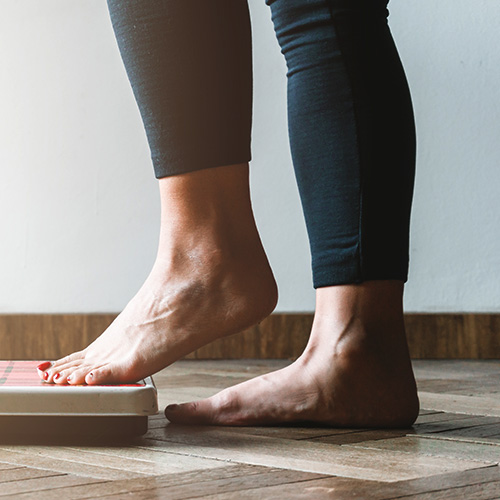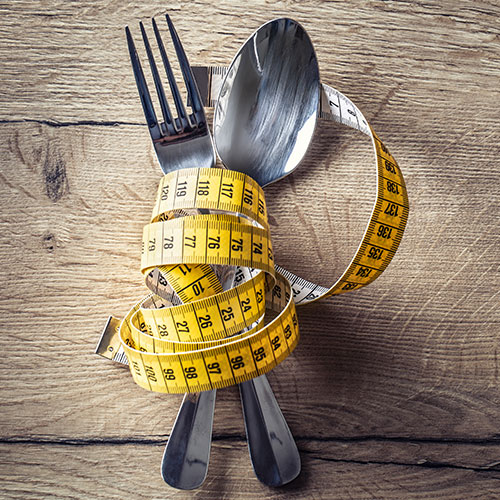
Do Fad Diets Work?
Dangers of Fad Diets for Weight Loss
Author: be well™ with Big Y® Registered Dietitian Team
Here’s the secret to weight loss, once and for all! Well, that’s at least what people tend to say when raving about the latest and greatest diet “you just have to try.” Fortunately, there are no secrets for how to lose and keep weight off…but there are for fad diets.
Registered dietitian, Andrea Luttrell, discusses whether or not fad diets really work.
What Are Fad Diets?

Any way of eating promoted for dropping pounds quickly, byway of steering clear of specific nutrients and/or Food Groups, that also has quasi-science speaking points associated with it, is a fad diet. Fad diets tend to be unsustainable in the long term while compromising one’s nutrition.
Fad Diet Examples

When you think of the term fad diet, do any popular diets come to mind? How about those that restrict a specific nutrient or “detoxify” your body? A new eating trend seems to pop up every year around this time, so it’s pretty easy to come up at least a handful.
Here are some of the top offenders:
#1- Low Carb
Any eating strategy that demonizes and severely restricts a key nutrient that the body needs to function properly, such as carbohydrates, is fad diet 101. Sadly, carbohydrates have received such a bad rap over the past few decades due to this trend that many people assume carbs are bad and need to be kicked out of everyone’s eating. There’s plenty of low carb diets to consider, take your pick! The Atkin’s Diet, Paleo Diet and Keto Diet are just a few.
#2- High Protein
High protein diets rest their laurels on the nostalgia of yesteryear when “man” hunted and foraged for their own food. The clinch pin is that almost none of us are surviving in the wilderness with nothing else to do than spend the day hunting for our nourishment and survival. We are not cavemen so pass on the Paleo Diet and focus on our current lifestyle and food supply.
#3- Fasting
A great example of a helpful theory run amuck—which can be said for almost all fad diets—purposeful fasting for weight loss and management is a large leap from what was historically a religious practice. Whether done daily and mindfully, as with Intermittent Fasting, or over the course of a few days, fasting has seen a resurgence.
#4- Cleansing
A common “pro-tip” in the diet world is the need to rid your body of all the bad and jump start weight loss by doing a cleanse. Whether you’re just downing lemon juice with red pepper for a few days or buying into a program with supplements, powders, drinks and soups, the take home message is you have to clean up the mess you made before you do right.
Dangers of Fad Diets

If learning how to eat to be healthier, for the short and long term, fad diets are not the answer. There are many off putting side effects to your health when following fad diets. The secret isn’t how they can help you, the secret is how harmful they can be.1,2
- Risk becoming malnourished by cutting out specific nutrients and/or Food Groups
- Rapid weight loss followed up by weight regain
- Exacerbate unhealthy food relationships
- Reinforce negative body image and self esteem
- Detrimental to chronic diseases
- Ignore the impact of lifestyle behavior choices
Fad Diet Signs

Is it a fad diet or just simply a meal pattern you haven’t heard of? See if it fits the following criteria:
- Recommends an extremely low number of calories.
- Demonizes essential nutrients such as carbohydrates and types of foods such as bread, pasta and grains.
- Sounds “too good to be true.”
- Promises immediate and extreme results.
- Unable to be maintained long term.
- Publicized on the cover of magazines and in informercials.
- A program that costs an exuberant amount of money.
- Incorporates no physical activity.
- Not recommended by registered dietitians.
- Not evidence-based and/or cherry-picked scientific jargon to support claims.
How to Lose Weight Without a Fad Diet

Fad diets exist because the interest to lose weight is rampant and behavior change is hard. Losing weight requires more than simply having the will and discipline to change how you eat. There are many circumstantial forces impacting how you eat and why you eat what you do.
Fad diets do not address these facts. All a fad diet does is tell you what to do to lose weight—not how to be healthier, not how to keep off the weight loss. Once you go on a diet, you’ll eventually come off. That is why d-i-e-t is considered a four-letter word to many dietitians.
What to do? More!
- Move more
- Sleep more
- Manage stress more often
- Participate more in the activities you love
- Eat more vegetables, fruit and beans, peas, lentils and chickpeas
- Drink more water
- Cook more meals at home
Opinion From Our Registered Dietitians

Weight loss is individualized—what works for you, may not work for the next person. The top recommendation we can give is become self-aware and pivot, slowly where necessary.
To start, keep a journal for a week to learn where you are:
- What are you currently eating?
- What are you currently doing for exercise?
- How does your sleep look one day from the next?
Learn where you need to be:
- How many servings of vegetables, fruit and beans, peas, lentils and chickpeas should you eat daily, weekly?
- How much water should you aim for each day?
- Do you purposefully move your body on a daily basis for physical activity?
- Are you able to sleep through the night? Do you sleep for a total of 7-9 hours each night?
Get to where you want to be:
- Visit MyPlate.gov to learn your Food Group Goals. Aim to work toward meeting the recommended servings of vegetables first, then fruit and then beans, peas, lentils and chickpeas.
- Begin transitioning beverages with added sugars, such as sweet tea, energy drinks, lattes and fruit drinks, to those with less added sugar or none at all by using less sugar in your tea and coffee, drinking half the amount of fruit drinks you normally do and incorporating more water breaks throughout your day.
- Once cleared by your primary healthcare provider, schedule a post meal walk after meals such as lunch and dinner or participate in online yoga and/or aerobic classes.
- Begin a bedtime ritual where electronics are shut down and put away at least an hour before bed, lights are dimmed, music becomes soothing and you begin to slow your pace to prepare your brain to switch to rest.

To learn more about making successful, long-lasting changes, sign up for a FREE virtual nutrition event with our dietitian team.
1 Tahreem A, Rakha A, Rabail R, et al. Fad diets: facts and fiction. Front Nutr. 2022;9:960922. https://doi.org/10.3389/fnut.2022.960922.
2 2Shisslak, C, Crago, M and Estes, L. The spectrum of eating disturbances. International Journal of Eating Disorders, 18(3), 209–219. https://onlinelibrary.wiley.com/doi/10.1002/1098-108X(199511)18:3%3C209::AID-EAT2260180303%3E3.0.CO;2-E.
Published 1/5/2023


